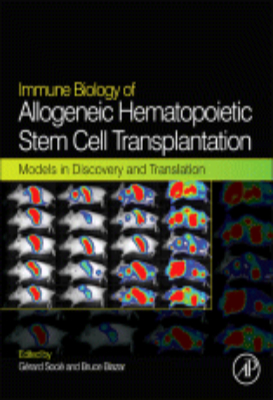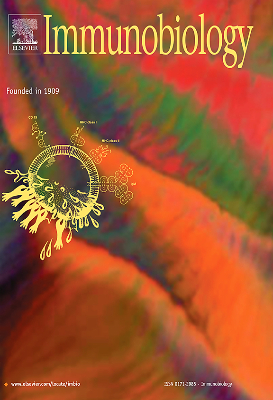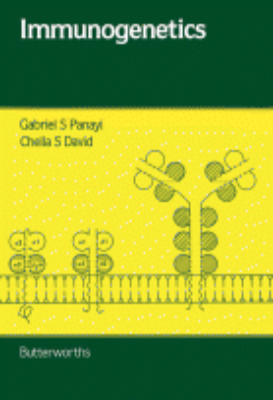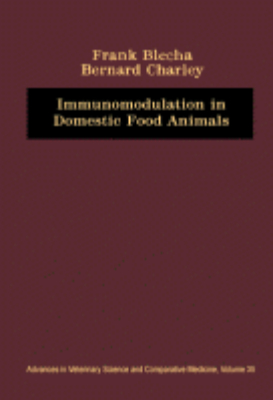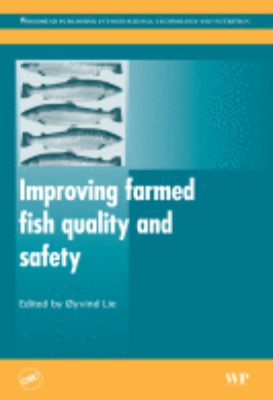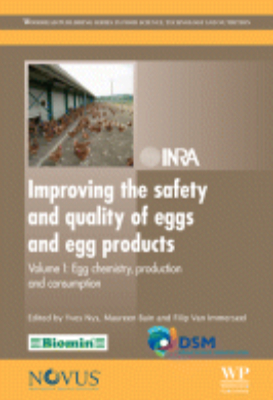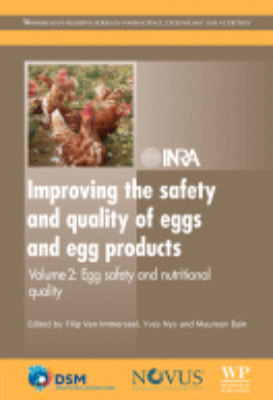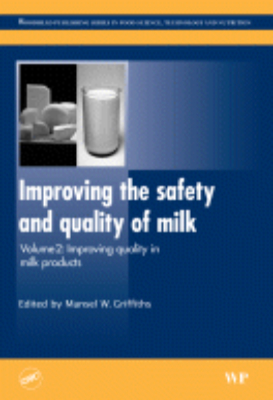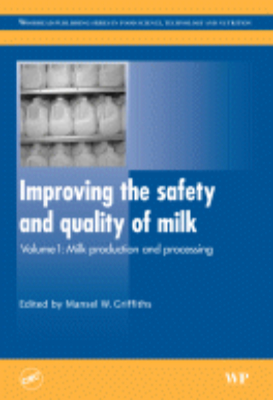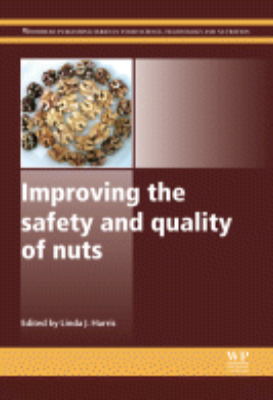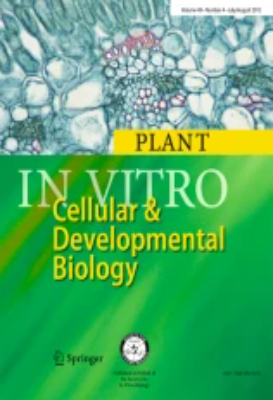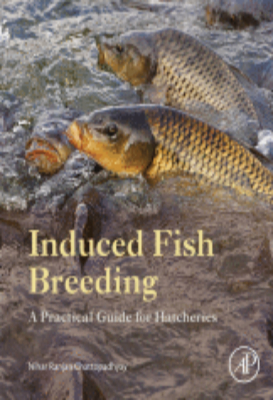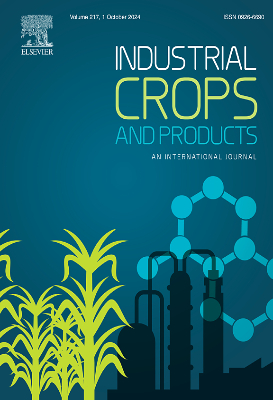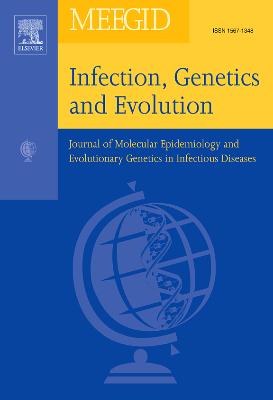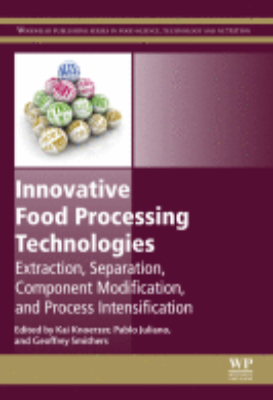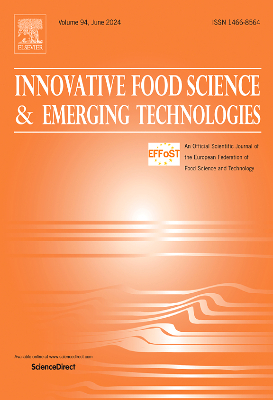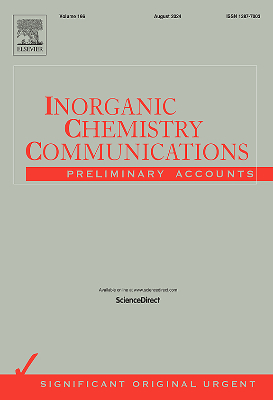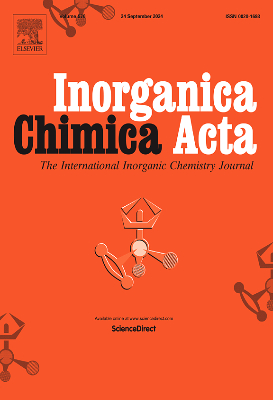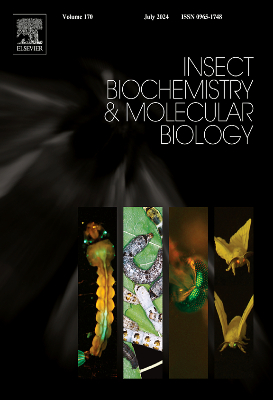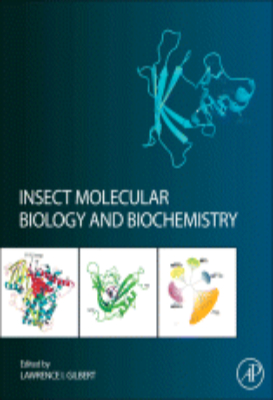E-Resources
Immune Biology of Allogeneic Hematopoietic Stem Cell Transplantation
"Immune Biology of Allogeneic Hematopoietic Stem Cell Transplantation provides clinical and scientific researchers with a deep understanding of the current research in this field and the implications for translational practice. By providing an overview of the immune biology of HSCT, an explanation of immune rejection, and detail on antigens and their role in HSCT success, this book embraces biologists and clinicians who need a broad view of the deeply complex processes involved. It then moves on to discuss the immunobiology mechanisms that influence graft-versus-host disease (GVHD), graft-versus-leukemia (GVL) effect, and transplantation success. Using illustrative figures, highlighting key issues, describing recent successes and discussing unanswered questions, this book sums up the current state of HSCT to enhance the prospects for the future. Allogeneic HSCT is a medical procedure in which a patient receives blood-forming stem cells from a genetically similar but not identical donor. This procedure is commonly performed for people with diseases of the blood, bone marrow, or certain cancers, but it remains risky with many possible complications. As such, experimental practice is reserved for preclinical animal models including the mouse and dog. These animal models have been essential in developing transplant protocols, including preclinical testing of conditioning regimens, treatment of GVHD, and understanding the pathology of GVHD as well as the immunological mechanisms of GVHD and GVL effect. However, recent research has revealed significant species differences between humans and animal models that must be considered when relating animal model studies to clinical allogeneic HSCT scenarios. Key Features. Brings together perspectives leading laboratories and clinical research groups to highlight advances from bench to the bedside. Guides readers through the caveats that must be considered when drawing conclusions from studies with animal models before correlating to clinical allogeneic HSCT scenarios. Categorizes the published advances in various aspects of immune biology of allegeneic HSCT to illustrate opportunities for clinical applications"
Immunogenetics
Immunogenetics is a 12-chapter book that begins with the elucidation of the major histocompatibility complex genes and their role in autoimmune and infectious diseases. Subsequent chapters explore the human major histocompatibility complex, including implications of their complement genes for linkage disequilibrium and disease associations. This book also describes the genetics of human immunoglobulins; T-cell clones; genes of the major histocompatibility complex of the mouse; and the generation, characterization, and use of monoclonal antibodies of murine and human origin. Specific diseases are also discussed; these include spondoarthritides, rheumatoid arthritis, systemic lupus erythematosus, multiple sclerosis, and autoimmune thyroid disease. This book will be of beneficial value to specialists in infectious diseases, endocrinology, connective tissue diseases, and neurology, as well as to medical scientists in immunology and molecular biology.
Improving Farmed Fish Quality and Safety
"Global aquaculture production has grown rapidly over the last 50 years. It is generally accepted that there is limited potential to increase traditional fisheries since most fish stocks are well or fully exploited. Consequently increased aquaculture production is required in order to maintain global per capita fish consumption at the present level. Fish farming enables greater control of product quality and safety, and presents the possibility of tailoring products according to consumer demands. This important collection reviews safety and quality issues in farmed fish and presents methods to improve product characteristics. The first part of the book focuses on chemical contaminants, chemical use in aquaculture and farmed fish safety. After an opening chapter discussing the risks and benefits of consumption of farmed fish, subsequent contributions consider environmental contaminants, pesticides, drug use and antibiotic resistance in aquaculture. Part two addresses important quality issues, such as selective breeding to improve flesh quality, the effects of dietary factors including alternative lipids and proteins sources on eating quality, microbial safety of farmed products, parasites, flesh colouration and off-flavours. Welfare issues and the ethical quality of farmed products are also covered. The final part discusses ways of managing of product quality, with chapters on HACCP, monitoring and surveillance, authenticity and product labelling. With its distinguished editor and international team of contributors, Improving farmed fish quality and safety is a standard reference for aquaculture industry professionals and academics in the field. Key Features. Reviews safety and quality issues in farmed fish and presents methods to improve product characteristics. Discusses contaminants, persistent organic pollutants and veterinary drug residues and methods for their reduction and control. Addresses important quality issues, genetic control of flesh characteristics and the effects of feed on product nutritional and sensory quality"
Improving the Safety and Quality of Eggs and Egg Products: 2011 Egg Chemistry, Production and Consumption
Eggs are economical and of high nutritional value, yet can also be a source of foodborne disease. Understanding of the factors influencing egg quality has increased in recent years and new technologies to assure egg safety have been developed. Improving the safety and quality of eggs and egg products reviews recent research in these areas.Volume 1 focuses on egg chemistry, production and consumption. Part one sets the scene with information on egg production and consumption in certain countries. Part two then provides essential information on egg formation and chemistry. Factors that impact egg quality are the focus of part three. Chapters cover the role of poultry breeding, hen nutrition and laying environment, among other significant topics. Part four addresses organic and free range egg production, the impact of egg production on the environment and non-poultry eggs. A chapter on processed egg products completes the volume.With its distinguished editors and international team of contributors, Volume 1 of Improving the safety and quality of eggs and egg products is an essential reference for managers in the egg industry, professionals in the food industry using eggs as ingredients and all those with a research interest in the subject.
Improving the Safety and Quality of Eggs and Egg Products: 2011 Egg Safety and Nutritional Quality
Eggs are economical and of high nutritional value, yet can also be a source of foodborne disease. Understanding of the factors influencing egg quality has increased in recent years and new technologies to assure egg safety have been developed. Improving the safety and quality of eggs and egg products reviews recent research in these areas Volume 2 focuses on egg safety and nutritional quality. Part one provides an overview of egg contaminants, covering both microbial pathogens and chemical residues. Salmonella control in laying hens is the focus of part two. Chapters cover essential topics such as monitoring and control procedures in laying flocks and egg decontamination methods. Finally, part three looks at the role of eggs in nutrition and other health applications. Chapters cover dietary cholesterol, egg allergy, egg enrichment and bioactive fractions of eggs, among other topics. With its distinguished editors and international team of contributors, Volume 2 of Improving the safety and quality of eggs and egg products is an essential reference for managers in the egg industry, professionals in the food industry using eggs as ingredients and all those with a research interest in the subject.
Improving the Safety and Quality of Milk: 2010 Improving Quality in Milk Products
Consumers demand quality milk with a reasonable shelf-life, a requirement that can be met more successfully by the milk industry through use of improved processes and technologies. Guaranteeing the production of safe milk also remains of paramount importance. Improving the safety and quality of milk provides a comprehensive and timely reference to best practice and research advances in these areas. Volume 1 focuses on milk production and processing. Volume 2 covers the sensory and nutritional quality of cows milk and addresses quality improvement of a range of other milk-based products. The health aspects of milk, its role in the diet and milk-based functional foods are the focus of the opening section of Volume 2. Part two reviews essential aspects of milk quality, including milk microbial spoilage and chemical deterioration, sensory evaluation, factors affecting milk vitamin and mineral content and the impact of packaging on quality. Chapters in part three look at improving particular products, such as organic milk, goat milk and sheep milk. The impact of milk on the quality of yoghurt and cheese is also covered. With its distinguished editor and international team of contributors, volume 2 of Improving the safety and quality of milk is an essential reference for researchers and those in industry responsible for milk safety and quality.
Improving the Safety and Quality of Milk: 2010 Milk Production and Processing
Consumers demand quality milk with a reasonable shelf-life, a requirement that can be met more successfully by the milk industry through use of improved processes and technologies. Guaranteeing the production of safe milk also remains of paramount importance. Improving the safety and quality of milk provides a comprehensive and timely reference to best practice and research advances in these areas. Volume 1 focuses on milk production and processing. Volume 2 covers the sensory and nutritional quality of cows milk and addresses quality improvement of a range of other milk-based products.The opening section of Volume 1: Milk production and processing introduces milk biochemistry and raw milk microbiology. Part two then reviews major milk contaminants, such as bacterial pathogens, pesticides and veterinary residues. The significance of milk production on the farm for product quality and safety is the focus of Part three. Chapters cover the effects of cows diet and mastitis, among other topics. Part four then reviews the state-of-the-art in milk processing. Improving the quality of pasteurised milk and UHT milk and novel non-thermal processing methods are among the subjects treated.With its distinguished editor and international team of contributors, volume 1 of Improving the safety and quality of milk is an essential reference for researchers and those in industry responsible for milk safety and quality.
Improving the Safety and Quality of Nuts
"As tree nuts and peanuts become increasingly recognised for their health-promoting properties, the provision of safe, high quality nuts is a growing concern. Improving the safety and quality of nuts reviews key aspects of nut safety and quality management.Part one explores production and processing practices and their influence on nut contaminants. Chapters discuss agricultural practices to reduce microbial contamination of nuts, pest control in postharvest nuts, and the impact of nut postharvest handling, de-shelling, drying and storage on quality. Further chapters review the validation of processes for reducing the microbial load on nuts and integrating Hazard Analysis Critical Control Point (HACCP) and Statistical Process Control (SPC) for safer nut processing. Chapters in part two focus on improving nut quality and safety and highlight oxidative rancidity in nuts, the impact of roasting on nut quality, and advances in automated nut sorting. Final chapters explore the safety and quality of a variety of nuts including almonds, macadamia nuts, pecans, peanuts, pistachios and walnuts.Improving the safety and quality of nuts is a comprehensive resource for food safety, product development and QA professionals using nuts in foods, those involved in nut growing, nut handling and nut processing, and researchers in food science and horticulture departments interested in the area. Key Features. Reviews key aspects of nut safety and quality management and addresses the influences of production and processing practices on nut safety. Analyses particular nut contaminants, safety management in nut processing and significant nut quality issues, such as oxidative rancidity. Places focus on quality and safety in the production and processing of selected types of nuts"
Indian Agriculture after Independence
Agriculture is the foundation of the civilization, culture and heritage of
India. Agriculture in India is a complex mosaic of distinct agro-ecosystems,
differentiated by climatic, soil, vegetation and other natural features. About
half of the Indians derive their livelihood from agriculture and allied activities.
It is one of the oldest systems of the world characterized by its diversity
and heterogeneity, unorganized and stressed on account of natural and
anthropogenic vagaries from ?seed to market?. Historically, stressed natural
resources due to unfavourable weather, monsoon and natural calamities
resulted in crop failures leading to food shortage that made serious impacts
on the civilization. Post-Independence, the Indian agriculture transformed
from a food-scarce to food-exporting country primarily due to science led
innovations that caused multifold increase in the agricultural production from
135 million tons in 1950/51 to over 1300 million tons in 2021/22 in spite of
increasing abiotic and biotic stresses and depleting alongwith deteriorating
natural resources.
The book ?Indian Agriculture after Independence? portrays the uniqueness,
diversity, vastness and history; and captures the aspirations of Indian
agriculture to develop a road-map for agri-food system matching with the 4th
Industrial Revolution and the global commitments on food security, nutrition
and sustainability. The first chapter provides an overview of Indian agriculture
with its achievements and aspirations. The following three chapters detail
out the crop and animal husbandry and natural resource management in
the pre-independent India starting from the Vedic to British period. The
subsequent chapters present the achievements of Indian agriculture after
independence in the areas of field crops, horticulture, livestock and poultry,
fisheries and aquaculture, crop and animal health, mechanization and postharvest processing, natural resources management, agricultural education
and extension, as well as policy, investment, collaboration and organizational
leadership.The book is an outcome of a sincere exercise by about 60 leading scientists and
science-leaders of ICAR, from a range of disciplines. In the course of
preparing the book, the authors and editors have received help and support
from different individuals. We are extremely grateful to each one of them. Our
sincere gratitude to the distinguished reviewers namely Dr. RB Singh, Dr. SP
Ghosh, Dr. JC Katyal, Dr. Mruthyunjaya, Dr. MP Yadav, Dr. SL Mehta, Dr. P
Das, Dr. VM Mayande and Dr. AG Ponnaiah for their constructive suggestions
and guidance. The editors take this opportunity to express their gratitude to all the authors for developing the chapters in a comprehensive and time-bound manner.
We sincerely thank Hon?ble Minister of Agriculture and Farmers? Welfare, and Hon?ble
Ministers of State of Agriculture and Farmers? Welfare, Govt. of India and Secretary,
DARE & DG, ICAR for their guidance and support in bringing out this publication. We are
thankful to the ICAR-Directorate of Knowledge Management in Agriculture, New Delhi
for its support in formating, developing the cover page and printing of the book.
We hope that the publication would be useful to the students, researchers, teachers, policy
makers, planners, administrators and the farmers.
Indian Farming January 2022
For the second successive year, Covid-19 pandemic is playing havoc for the world,
India in particular. Indian agriculture has progressed tremendously on every front
despite the pandemic. Thanks to the government policies, initiatives and untiring efforts
of our scientists, farmers and other stakeholders. Share of gross value added by agriculture
was estimated at ` 19.48 lakh crore in 2020, which is 17.8% compared to other sectors. In
India, total food grain production was recorded at 296.65 million tonnes in 2020 which is
11.44 million tonnes more compared with 285.11 million tonnes in 2019. For the year 2022,
the government has set a target for farmers to increase food grain production by 2% i.e.
to 307.31 million tonnes. In 2021, production was recorded at 303.34 million against a
target of 301 million tonnes.
India has the highest livestock population of about 535.78 million, which is around 31%
of the world livestock population. Milk production in the country was 198 MT in 2020.
India is the second highest producer of rice, wheat, sugarcane, cotton, groundnut, and
fruits and vegetables in the world. The Indian food industry is assured for huge growth
due to its enormous potential for value addition, specially within the food processing
industry. Indian food and grocery market is sixth largest market in the world, with retail
contributing 70% of sales. The Indian food processing industry has grabbed 32% of the
country?s total food market. In India, the processed food market is expected to grow to
` 3,41,352.5 crore by 2025 as compared to ` 1,931,288.7 crore in 2020. The organic food
segment in India will grow at a CAGR of 10% between 2015?25 and is estimated to reach
` 75,000 crore by 2025 as against ` 2,700 crore in 2015. In 2019, Coca Cola launched ?Rani
Float? fruit juices.
Two diagnostic kits developed by ICAR-IVRI and the Japanese Encephalitis IgM ELISA
were launched in 2019. Investment of ` 8,500 crore has been declared for ethanol production
in India. In 2021, APEDA signed an MoU with ICAR-CCRI, Nagpur, for increasing export
of citrus and its value-added products. In 2021, the Prime Minister launched 35 crop
varieties with special traits such as climate resilience and higher nutrient content. The
government has initiated Digital Agriculture Mission for 2021?25 for agriculture projects
based on new technologies such as artificial intelligence, block chain, remote sensing and
GIS technology, drones, robots and others. The Krishi UDAN 2.0 scheme proposes
assistance and incentive for movement of agri-produce by air transport. India looks forward
to achieve the ambitious goal of doubling farmer?s income by 2022.
Induced Fish Breeding
"Induced Fish Breeding: A Practical Guide for Hatcheries takes a successive approach to explaining the use of breeding technology with proven scientific methods. It provides real-life examples for the purpose of maximizing fish and seed production to support overall sustainability in aquaculture. It is a concise reference to understanding the latest developments in the field, useful for anyone who is involved in fisheries or hatchery management as well as researchers and students who need to understand the technology. A practice originally developed to produce quality seed in captivity, induced breeding has made great strides in fish populations for India. The book offers a practical and succinct overviewfrom existing methods and operations to recent trends and their impacts on aquaculture for the future. Key Features. Provides detailed information about empirical breeding practices like mixed spawning and indiscriminate hybridization. Presents the environmental and hormonal influence on maturation and spawning of fish with real-life fish breeding examples from around the world. Includes step-by-step scientific measures to help solve problems arising from common fish-farming mistakes. Provides real-life examples for the purpose of maximizing fish and seed production to support overall sustainability in aquaculture"
Innovative Food Processing Technologies
"Innovative Food Processing Technologies: Extraction, Separation, Component Modification and Process Intensification focuses on advances in new and novel non-thermal processing technologies which allow food producers to modify and process food with minimal damage to the foodstuffs. The book is highly focused on the application of new and novel technologies, beginning with an introductory chapter, and then detailing technologies which can be used to extract food components. Further sections on the use of technologies to modify the structure of food and the separation of food components are also included, with a final section focusing on process intensification and enhancement. Key Features. Provides information on a variety of food processing technologies. Focuses on advances in new and novel non-thermal processing technologies which allow food producers to modify and process food with minimal damage to the foodstuffs. Presents a strong focus on the application of technologies in a variety of situations. Created by editors who have a background in both the industry and academia"
Inorganic Nutrition of Plants
Plant Physiology, Volume III: Inorganic Nutrition of Plants deals with the inorganic nutrition and metabolism of plants. The book explores the role of elements, other than carbon, hydrogen, and oxygen, which are essential to, or used by, plants in their vital processes. It summarizes the knowledge about mineral nutrition of plants and presents a philosophy of plant nutrition in general. This volume is organized into six chapters and begins with a brief history of mineral nutrition of plants, as well as the media from which plants draw their nutrients, such as the soil and artificial culture medium. The book then discusses the requirements for specific elements, the symptoms incurred by their deficient supply, and the evidence that a given element can be considered essential. The next chapters focus on the inorganic nutrition of microorganisms, general functions of the essential nutrient elements, and the biological situations in which elementary nitrogen is converted to the organic form. The book concludes by analyzing the soil as a complex biological system and its implication for the interpretation of the nutrition of higher plants. This book is a valuable resource for those interested in plant nutrition and plant physiology.
Insect Molecular Biology and Biochemistry
"The publication of the extensive seven-volume work Comprehensive Molecular Insect Science provided a complete reference encompassing important developments and achievements in modern insect science. One of the most swiftly moving areas in entomological and comparative research is molecular biology, and this volume, Insect Molecular Biology and Biochemistry, is designed for those who desire a comprehensive yet concise work on important aspects of this topic. This volume contains ten fully revised or rewritten chapters from the original series as well as five completely new chapters on topics such as insect immunology, insect genomics, RNAi, and molecular biology of circadian rhythms and circadian behavior. The topics included are key to an understanding of insect development, with emphasis on the cuticle, digestive properties, and the transport of lipids; extensive and integrated chapters on cytochrome P450s; and the role of transposable elements in the developmental processes as well as programmed cell death. This volume will be of great value to senior investigators, graduate students, post-doctoral fellows and advanced undergraduate research students. It can also be used as a reference for graduate courses and seminars on the topic. Chapters will also be valuable to the applied biologist or entomologist, providing the requisite understanding necessary for probing the more applied research areas related to insect control. Key Features. Topics specially selected by the editor-in-chief of the original major reference work. Fully revised and new contributions bring together the latest research in the rapidly moving fields of insect molecular biology and insect biochemistry, including coverage of development, physiology, immunity and proteomics. Full-color provides readers with clear, useful illustrations to highlight important research findings"



